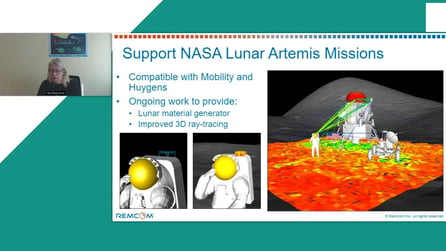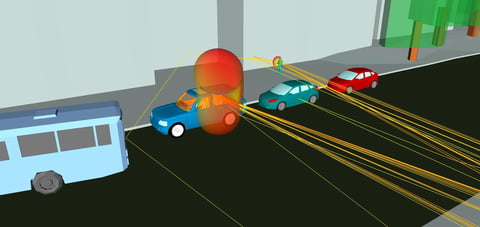An Analysis of a Stochastic Urban Propagation Model Using Ray Tracing Generated Results
 A stochastic urban electromagnetic propagation model for non-line-of-sight (NLOS) paths was critically examined by comparing model behavior to ray tracing simulations in four city environments. We focus on the quality of model/data fit and the ability to a priori set model parameters based on city geometry and building materials.
A stochastic urban electromagnetic propagation model for non-line-of-sight (NLOS) paths was critically examined by comparing model behavior to ray tracing simulations in four city environments. We focus on the quality of model/data fit and the ability to a priori set model parameters based on city geometry and building materials.
The stochastic model was found to fit simulated data well in typical cities. However, relating model parameters to city geometry metrics met with limited success. This is most likely due to the difficulty in characterizing city geometry, and the underlying physics of the model. The complex process of electromagnetic propagation is modeled as a simple one-dimensional random work, leading to diffusion-like behavior. The model does possess utility in its ability to provide easily computed estimates of urban propagation path losses and is an improvement over other empirical models.


